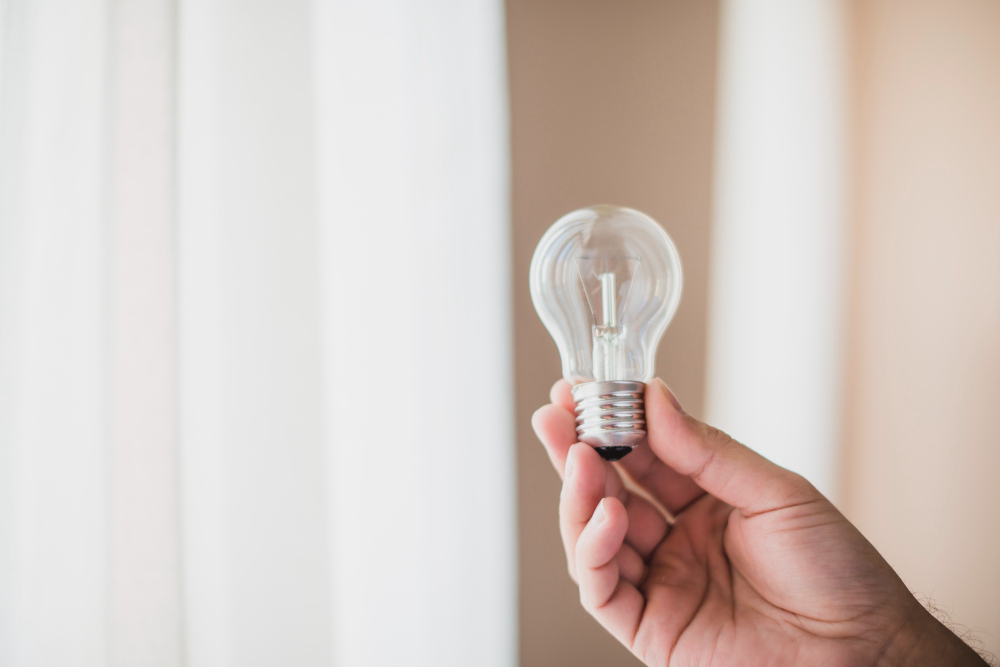Common LED Bulb Myths

Lighting technology has come a long way over the last decade, with LED bulbs becoming a household staple. Yet, despite their increasing popularity, several myths about LED bulbs persist, causing confusion among homeowners and businesses alike. If you’re hesitant about switching to LED lighting, this post will help separate fact from fiction.
We'll tackle the seven most common LED myths and uncover the truths behind them. Plus, if you live in Winter Park, FL, and need professional advice, we’ll share how Spectrum Electric Inc's experienced electrical contractors can guide you every step of the way.
What Are LED Bulbs?
LED stands for Light-Emitting Diode. Unlike traditional incandescent and CFL (compact fluorescent lamp) bulbs, LED bulbs are known for their energy efficiency, longevity, and durability. They convert most of the electricity they consume into light rather than wasting it as heat. Despite these advantages, misunderstandings about LED performance and advantages are still widespread.
Myth 1: LED Bulbs Are Too Expensive
Many people believe that LED bulbs cost too much compared to traditional incandescent or CFL bulbs. While it’s true that the upfront cost of an LED bulb is higher, the long-term savings far outweigh the initial expense.
LED bulbs use up to 75% less energy than incandescent bulbs and last significantly longer, meaning fewer replacements and reduced electricity bills. An average LED bulb can last 25,000 hours or more, compared to 1,000 hours for incandescent bulbs. Over time, this translates into substantial cost savings for homeowners and businesses.
The Truth:
Think of LED bulbs as an investment. Their energy efficiency and longevity provide excellent value over the long term.
Myth 2: LED Bulbs Aren’t Bright Enough
Another common misconception is that LED bulbs don't provide enough brightness, making them unsuitable for larger spaces. This myth likely stems from the fact that LED bulbs use fewer watts, misleading people into thinking they are dimmer than traditional options.
However, watts measure energy consumption, not brightness. For brightness, you need to look at lumens. Modern LED bulbs are available in a wide range of brightness levels, measured in lumens, which can easily match or exceed the brightness of traditional bulbs.
The Truth:
LED bulbs produce ample light. Look for the number of lumens on the bulb’s packaging if you're concerned about brightness levels.
Myth 3: LEDs Are Only Available in Cool, Harsh Light
When people think of LED lighting, they often imagine the cooler, bluish tones typical of early LED bulbs. Luckily, LED lighting technology has significantly evolved. Today, you can find LEDs in warm whites, soft yellows, and even customizable color temperatures to suit your space and mood.
Want cozy lighting for the living room? Or bright, daylight-like bulbs for your workspace? LEDs have it all.
The Truth:
LED bulbs are as versatile in color temperature as any other type of bulb, and they can be customized to create the perfect ambiance.
Myth 4: LEDs Are Harmful to Your Eyes
Some individuals believe that LED bulbs can harm eyesight because of their brightness or flickering. While poorly manufactured LEDs may flicker and cause discomfort, high-quality LED products are designed to emit stable, flicker-free light.
Brightness levels and color temperature also matter when it comes to comfort. Opt for dimmable LED bulbs and warm tones for areas where you’ll spend long periods to prevent eye strain.
The Truth:
High-quality LEDs are perfectly safe for your eyes. Ensuring proper installation and investing in reputable brands solve these concerns.
Myth 5: LEDs Aren’t Cost-Effective in Warmer Climates
People living in warm climates like Winter Park, FL, worry that LEDs will underperform or overheat in their homes. The good news? LEDs don’t emit nearly as much heat as incandescent or CFL bulbs, making them an excellent choice for keeping your rooms cooler.
They’re especially practical for the Florida heat, as they consume less energy and contribute less to indoor heat accumulation compared to traditional lighting solutions.
The Truth:
LEDs perform exceptionally well in all climates, including warmer ones. Their low heat emission complements cooling efforts, especially in hot environments.
Myth 6: Installation Is Complicated or Requires Special Fixtures
A frequent misconception is that switching to LEDs requires special fixtures or advanced electrical work. Most LED bulbs are designed to fit into standard fixtures, making the transition seamless. However, retrofitting may occasionally be needed when replacing old fluorescent lighting systems or for specialty projects in commercial spaces.
If you’re unsure, professional electrical contractors can make the installation process easy and efficient.
The Truth:
For many applications, LEDs work seamlessly with existing fixtures. If retrofitting is needed, a professional electrician can guide you.
Myth 7: LED Bulbs Don’t Work With Dimmer Switches
While it’s true that not all LED bulbs are compatible with traditional dimmer switches, dimmable LED options are readily available in the market. Pairing a compatible LED bulb with an LED-friendly dimmer switch allows for full control over lighting intensity.
The Truth:
LED bulbs can work with dimmer switches if you choose the right product and compatible dimmer.
Why Should You Trust Professional Guidance?
While LED lighting offers many benefits, understanding the best options for your home or business can feel overwhelming. Factors like color temperature, lumens, dimmability, and potential retrofitting can vary depending on your specific needs and existing fixtures.
That’s where professional electrical contractors in Winter Park, FL, come in. They can assess your space, recommend the best solutions, and ensure that your LED conversion process is both efficient and cost-effective.
Your Next Step Toward Smarter Lighting
Don’t fall for these LED myths any longer. LEDs are safe, cost-effective, and versatile lighting solutions that are perfect for homes and businesses alike.
If you're looking to upgrade your lighting or need expert advice, Spectrum Electric Inc is here to help. Serving Winter Park, FL, our experienced electrical contractors specialize in bringing efficient, energy-saving solutions to homeowners and businesses.
Contact Spectrum Electric Inc today to schedule an appointment and take the first step toward smarter lighting.
